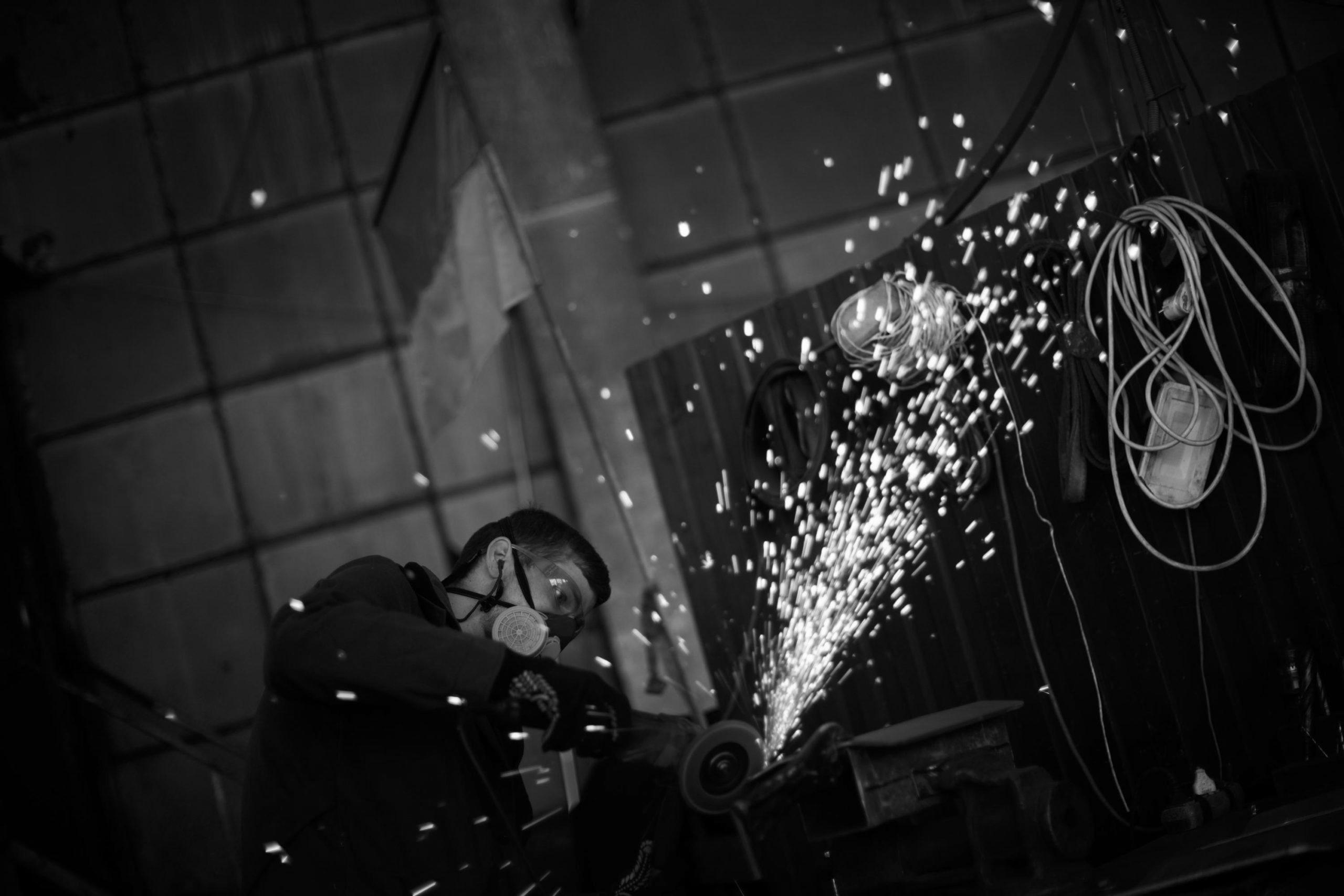Shield the body: Ukraine volunteers craft armor, camouflage
Warning: Undefined variable $post_id in /home/webpages/lima-city/booktips/wordpress_de-2022-03-17-33f52d/wp-content/themes/fast-press/single.php on line 26

2022-05-09 09:16:18
#Defend #physique #Ukraine #volunteers #craft #armor #camouflage
ZAPORIZHZHIA, Ukraine (AP) — Sparks fly as a round noticed slices into metallic, while welders close by work feverishly to the sound of blaring heavy metallic. Upstairs, stitching machines clatter as ladies mark patterns on cloth being formed into bulletproof vests.
An outdated industrial advanced within the southeastern Ukrainian riverside metropolis of Zaporizhzhia has change into a hive of activity for volunteers producing everything from body armor and anti-tank obstacles to camouflage nets, moveable heating stoves and rifle slings for Ukrainian soldiers combating Russia’s invasion. One section makes a speciality of automobiles, armor-plating some, converting others into ambulances. Another organizes meals and medical deliveries.
With the front line about 50 kilometers (30 miles) from the town, some sections of the operation, such because the stitching of bulletproof vests, are working around the clock in shifts to meet demand. Crowdfunding has introduced in enough money to buy steel from Sweden, Finland and Belgium, which is lighter than local metal, organizers say, an important quality for physique armor.
The operation is the brainchild of native celebrity Vasyl Busharov and his friend Hennadii Vovchenko, who ran a furniture-making business. They named it Palianytsia, a kind of Ukrainian bread whose name many Ukrainians say can't be pronounced correctly by Russians.
The operation relies entirely on volunteers, who now number more than 400 and are available from all walks of life, from tailors to craftsmen to legal professionals. Apart from those concerned in manufacturing, there are additionally drivers delivering humanitarian support and medical tools purchased by donated funds.
“I feel I'm wanted here,” said dressmaker Olena Grekova, 52, taking a short break from marking material for vests.
When Russia invaded on Feb. 24, she was in Thailand seeking inspiration for her spring collection. Initially, she said, she questioned whether or not it was an indication from God that she shouldn’t return. Her husband and two grownup sons urged her not to.
“But I decided that I had to go back,” she mentioned.
She had identified Busharov for years. Arriving residence on March 3, she gathered her equipment the subsequent day and by March 5 was at Palianytsia. She’s been working there every day since, bar one, typically even at night time.
Shifting from designing backless ballgowns to creating purposeful bulletproof vests was “a new expertise for me,” Grekova mentioned. But she sought feedback from troopers for her designs, which have armor plates added. Now she is helping to produce a number of variations, including a prototype summer vest.
In one other section of the economic complicated, 55-year-old Ihor Prytula was busy making a new camouflage web, winding pieces of dyed fabric by a string frame. A furniture-maker by trade, he joined Palianytsia initially of the warfare. He had some military experience, he stated, so it was simple to get suggestions from soldiers on what they needed.
“We speak the identical language,” he mentioned.
For Prytula, the warfare is private. His 27-year-old son was killed in late March as he helped evacuate people from the northern city of Chernihiv.
“The warfare and loss of life, it’s unhealthy, trust me, I know this,” he stated. “It’s unhealthy, it’s tears, it’s sorrow.”
The decision for volunteers went out as soon because the warfare began. Busharov announced his undertaking on Facebook on Feb. 25. The following day, 50 folks turned up. “Next day 150 individuals, subsequent day 300 folks. ... And all collectively, we try (to) shield our metropolis.”
They started out making Molovov cocktails in case Russian troopers superior on Zaporizhzhia. In 10 days, they produced 14,000, he mentioned. Then they turned to producing anti-tank obstacles often called hedgehogs — three large steel beams soldered collectively at angles — used as part of town’s defenses. Soon, Busharov and Vovchenko mentioned, they found another urgent need: there weren’t enough bulletproof vests for Ukraine’s troopers.
However learning methods to make one thing so specialised wasn’t easy.
“I wasn’t truly linked with the army at all,” mentioned Vovchenko. “It took two days and three sleepless nights to grasp what must be executed.”
The staff went by means of numerous types of metal, making plates and testing them to examine bullet penetration. Some didn’t supply sufficient safety, others were too heavy to be useful. Then they'd a breakthrough.
“It turns out that metal used for automobile suspension has very good properties for bullet penetration,” Vovchenko mentioned, standing in front of four shelves of check plates with varying levels of bullet harm. The one manufactured from automotive suspension metal showed dozens of bullet marks but none that penetrated.
The vests and the whole lot else made at Palianytsia are offered free to troopers who request them, as long as they will show they are within the military. Each plate is numbered and every vest has a label noting it is not for sale.
So far, Palianytsia has produced 1,800 bulletproof vests in two months, Busharov stated, including there was a waiting record of around 2,000 more from throughout Ukraine.
Vovchenko said they've heard about up to 300 people whose lives have been saved by the vests.
Understanding that's “incredibly inspiring and it retains us going,” he said.
____
Inna Varenytsia in Zaporizhzhia, Ukraine, contributed.
___
Follow all AP stories on the warfare in Ukraine at https://apnews.com/hub/russia-ukraine
Quelle: apnews.com